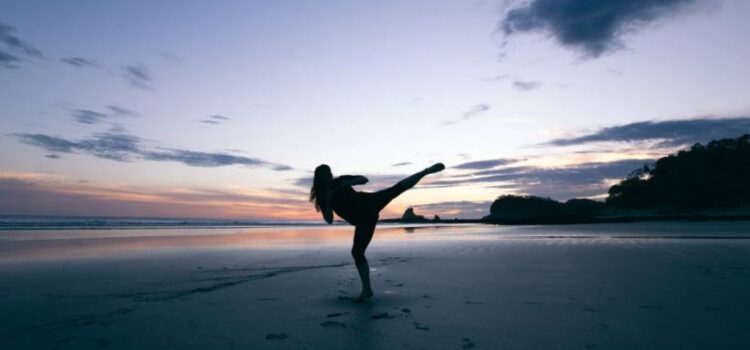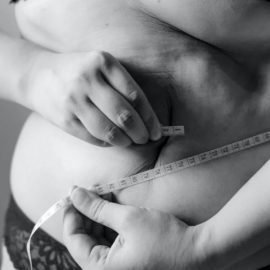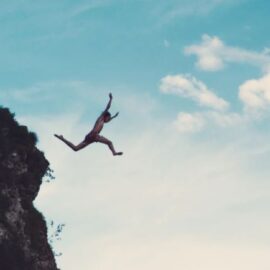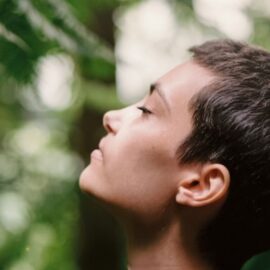

This article is an excerpt from the Shortform book guide to "Flow" by Mihaly Csikszentmihalyi. Shortform has the world's best summaries and analyses of books you should be reading.
Like this article? Sign up for a free trial here .
How can you find flow through movement? Why do yoga, martial arts, and dance tend to induce a flow state?
Participating in any form of movement can assist you in finding flow as long as it’s in the context of a goal or social setting that offers structure and challenge. Activities such as yoga, martial arts, and dancing fall in this context and tend to be flow-inducing activities.
Here’s how you can find flow with movement.
Finding Flow Using Movement
There are a variety of enjoyable ways to use your body. Every sense we perceive—such as tasting and hearing—and movement we’re capable of making corresponds to one or more flow experiences. The ability to run, throw, swim, or sing could all yield flow experiences if you work on them in the context of a goal or social setting that offers structure and challenge. Yet many of us don’t use goal setting to actively cultivate our senses or physical ability to maximize our enjoyment of life, leaving the senses, to provide us with chaotic, disordered information.
Here are three ways of finding flow through movement:
Yoga and Martial Arts
Yoga and the martial arts are examples of physical activities developed in the East that encourage mastering your consciousness.
Yoga
Hatha Yoga was developed 1,500 years ago by Patanjali. “Yoga” is the Sanskrit word for “yoking,” or the practice of becoming one with God. This occurs over eight stages, each building on new skills. Note: Stages three and four correspond to physical activities, while stages one, two, and five through eight correspond to mental activities.
Stages 1 and 2: Change your attitude. These stages focus on reducing your mental chaos before you attempt to control your consciousness. In the first stage, called yama, or “restraint,” you reduce thoughts and actions that could harm others, such as lying and stealing. In the second stage, called niyama, or “obedience,” you build discipline through doing routines, such as studying, worshipping God, or cleaning. Organizing activities into patterns makes it easier to control your attention.
Stages 3 and 4: Develop physical habits to overcome your senses. Developing physical techniques to work through the demands of your senses helps you focus your attention and find flow. These are the stages westerners know best. Stage three, called Asana, or “sitting,” consists of holding postures or positions without getting tired. Stage four, called pranayama, consists of controlling your breathing in order to relax the body.
Stage 5: Redirect the senses. In this stage, called pratyahara, or “withdrawal,” you learn to withdraw your attention from senses so that you’re only aware of the sensory input you choose. This mirrors flow because it’s a form of controlling your consciousness.
Stage 6: Concentrate on one thing. This stage, called dharana, or “holding on,” is the opposite of pratyahara: You learn to concentrate your attention on one stimulus for a sustained period of time.
Stage 7: Forget yourself. In Dhyana, or intense meditation, you learn to focus on one thing without needing an external stimulus. In the process, you don’t focus attention on yourself.
Stage 8: Become self-collected. In this stage, known as samadhi, you become one with a universal power. People who achieve this stage describe it as one of the most joyful experiences of their lives.
People disagree on whether Yoga is a true flow experience. Though it contains many elements required for flow, such as concentration and self-forgetfulness, some argue that whereas flow is focused on strengthening your sense of self, yoga is about getting rid of the self. But Csikszentmihalyi argues that yoga is a well-structured flow experience because you have to control your consciousness up to the final stage, and you have to be in control of and aware of your self in order to break from it. Only people who have reached a certain level of control over their instincts, desires, and actions achieve this.
Like other practices, yoga is a product of the time and place it was developed in. Though it may produce flow, consider whether the investment of time and energy required to achieve it through this method is worth it to you.
Martial Arts
Martial arts are an assortment of sports that were developed for controlling consciousness in Zen Buddhism and Taoism. Examples include karate, jujitsu, and kung fu, which don’t require a weapon and originated in China; and kendo, or fencing, which originated in Japan. These sports are designed to improve the spiritual and mental health of the person doing them. Over time, practitioners are able to do them without having to think about each individual move: Mind and body act together in a harmonious way.
Dancing and Acting
Dance is one of the oldest flow activities. It’s complex and appeals to people of all ages. Both informal dancing, such as dancing in a club, and specific genres of dance, such as ballet, can create flow experiences. Teenagers who went clubbing reported a sense of connection with the people around them, and they enjoyed the challenge of producing movements that matched the music and the movements of other dancers. Professional dance requires dedicating yourself to grueling training. Many professional dancers forgo marriage and having children, yet they feel dance is something they can’t live without.
Acting is another example of a flow-producing activity that doesn’t necessarily require professional dedication. Just playing charades allows you to break from your normal behavior for a short time, adding variety to your life that can produce flow.

———End of Preview———
Like what you just read? Read the rest of the world's best book summary and analysis of Mihaly Csikszentmihalyi's "Flow" at Shortform .
Here's what you'll find in our full Flow summary :
- Why people feel the happiest when they're in the "flow state"
- What activities and personality traits promote flow
- Why you may have a paradoxical relationship with work and leisure






